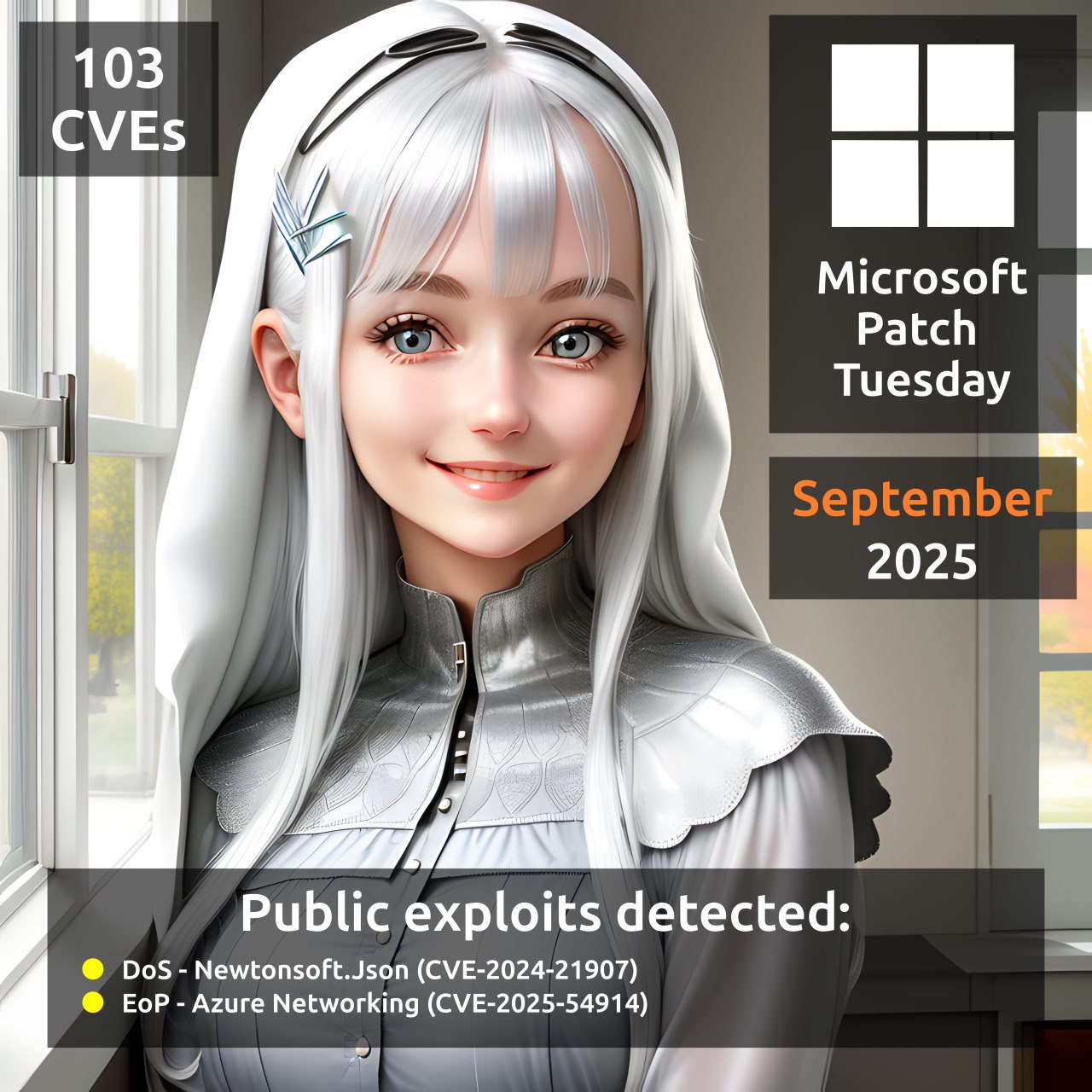
September Microsoft Patch Tuesday. A total of 103 vulnerabilities, 29 fewer than in August. Of these, 25 vulnerabilities were added between the August and September MSPT. So far, no vulnerabilities are known to be exploited in the wild. Two have public PoC exploits:
🔸 DoS – Newtonsoft.Json (CVE-2024-21907)
🔸 EoP – Azure Networking (CVE-2025-54914)
Notable among the other vulnerabilities without public exploits:
🔹 RCE – Microsoft Office (CVE-2025-54910), Windows Graphics Component (CVE-2025-55228), NTFS (CVE-2025-54916), SharePoint (CVE-2025-54897), Microsoft HPC Pack (CVE-2025-55232), Hyper-V (CVE-2025-55224), Graphics Kernel (CVE-2025-55226, CVE-2025-55236)
🔹 EoP – Windows NTLM (CVE-2025-54918), Windows Kernel (CVE-2025-54110), Windows SMB (CVE-2025-55234), Windows TCP/IP Driver (CVE-2025-54093), Hyper-V (CVE-2025-54091, CVE-2025-54092, CVE-2025-54098, CVE-2025-54115)













